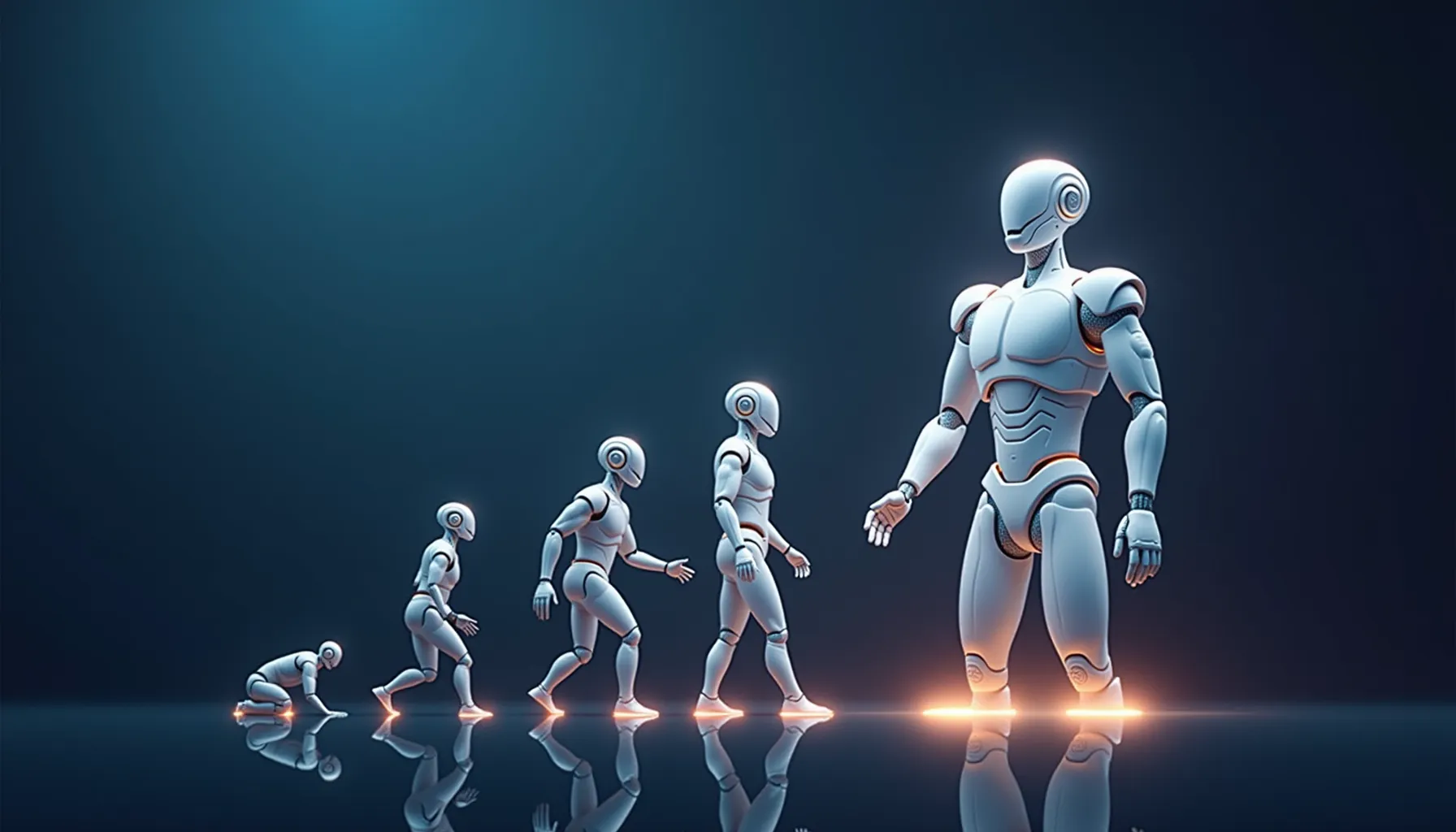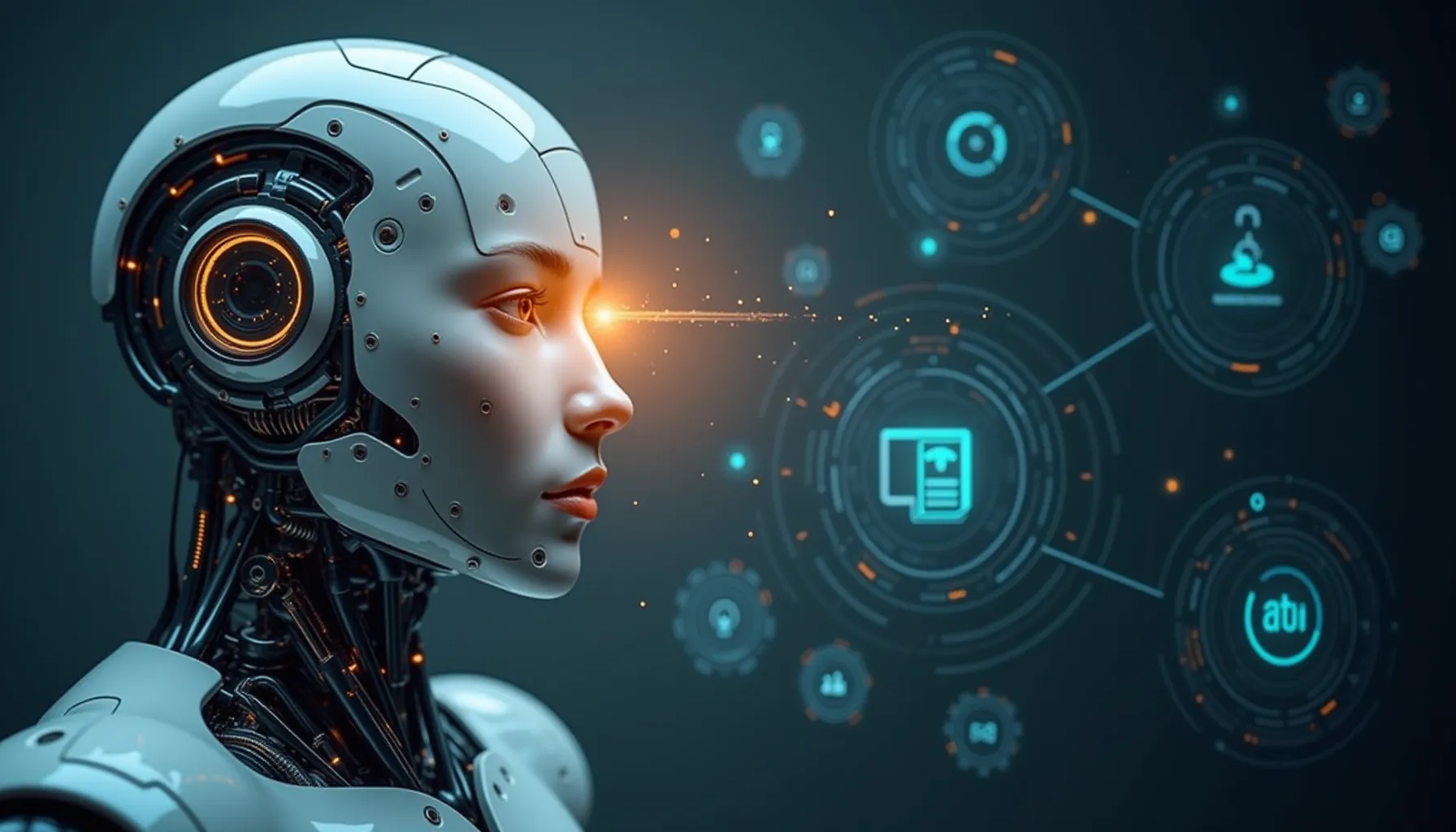Exploring AI Theory: Transforming Our Future Today
-
Dec. 28, 2024
-
David Blum

Have you ever wondered about the brains behind AI theory? It's the fascinating field that's reshaping our world, from the smartphones in our pockets to the cutting-edge medical breakthroughs saving lives. As someone who's been captivated by AI for years, I've seen its incredible evolution firsthand.
In this article, we'll embark on a journey through the landscape of AI theory, exploring its foundations, real-world applications, and the ethical questions it raises. Whether you're a tech enthusiast or just curious about the future, you'll find something intriguing here.
So, grab a cup of coffee and join me as we unravel the mysteries of AI theory. Trust me, by the end of this, you'll see the world around you in a whole new light.
Key Takeaways:
- AI theory is the backbone of modern artificial intelligence applications
- The field has evolved dramatically since its inception in the 1950s
- Machine learning and neural networks are central concepts in AI theory
- AI applications span various industries, from healthcare to finance
- Ethical considerations are crucial as AI becomes more integrated into our lives

The Evolution of AI Theory: A Brief History
The journey of AI theory is a rollercoaster ride of breakthroughs, setbacks, and unexpected twists. It all kicked off in 1956 at the Dartmouth Conference, where brilliant minds like John McCarthy and Marvin Minsky first coined the term "artificial intelligence."
These pioneers dreamed of machines that could mimic human intelligence. Little did they know how their ideas would shape the future.
The birth of AI: Dartmouth Conference 1956
Picture a group of excited scientists huddled in a room, brainstorming about machines that could think. That's exactly what happened at Dartmouth. They believed that every aspect of learning or intelligence could be precisely described and simulated by a machine.
This audacious goal set the stage for decades of research and innovation. It's mind-blowing to think how far we've come from those early discussions.
Waves of innovation and AI winters
AI's path hasn't been a straight line. We've seen incredible highs followed by disappointing lows. Remember the AI winters?
These were periods when funding and interest in AI research dried up.
But here's the thing about innovation - it's resilient. Each setback only fueled more determination and creativity in the field.
The renaissance: How big data and computing power changed the game
Fast forward to the 21st century, and AI is experiencing a renaissance. What changed? Two words: big data and computing power. Suddenly, we had access to vast amounts of information and the ability to process it quickly.
This perfect storm of data and processing capability breathed new life into AI theory, paving the way for the breakthroughs we're seeing today.
Core Concepts in AI Theory
Now that we've covered the history, let's dive into the meat of AI theory. These core concepts are the building blocks that make modern AI possible.
Machine learning: Teaching computers to learn
Machine learning is like teaching a child. Instead of programming every single instruction, we give the computer the tools to learn on its own. It's fascinating to watch an algorithm improve over time, almost as if it's developing its own intelligence.
Supervised learning
Think of supervised learning as learning with training wheels. We provide the algorithm with labeled data and tell it what to look for. It's like showing a child pictures of dogs and cats and teaching them to distinguish between the two.
Unsupervised learning
Unsupervised learning is more like free play. We give the algorithm data without labels and let it find patterns on its own. It's amazing to see what insights it can uncover without explicit guidance.
Reinforcement learning
This is where things get really exciting. Reinforcement learning is like teaching through trial and error. The algorithm learns by interacting with its environment, much like how we learn to play a new game.
Neural networks and deep learning
Neural networks are the rockstars of modern AI. They're inspired by the human brain, with interconnected nodes that process information. When we stack multiple layers of these networks, we get deep learning - the technology behind many of today's AI breakthroughs.
Mimicking the human brain
It's mind-boggling how neural networks can simulate the way our brains work. They can recognize patterns, make decisions, and even be creative in ways that sometimes surpass human capabilities.
Breakthroughs in image and speech recognition
Thanks to deep learning, we've seen incredible advancements in image and speech recognition. From unlocking your phone with your face to having a conversation with a virtual assistant, these technologies have become part of our daily lives.
Natural Language Processing: Bridging human-computer communication
Natural Language Processing (NLP) is all about helping computers understand and generate human language. It's the reason why we can have conversations with chatbots or get instant translations of foreign languages.
The field of NLP has made enormous strides in recent years, enabling more natural and intuitive interactions between humans and machines. It's exciting to think about how this technology will continue to evolve and shape our communication in the future.
AI Theory in Action: Real-World Applications
Now that we've explored the foundations of AI theory, let's dive into how these concepts are shaping our world. It's truly incredible to see how AI is revolutionizing various industries and improving our daily lives.
Healthcare: From diagnosis to drug discovery
AI is transforming healthcare in ways we could only dream of a few years ago. Machine learning algorithms are now capable of analyzing medical images with astonishing accuracy, often outperforming human doctors in detecting certain conditions.
In drug discovery, AI is accelerating the process of identifying potential new treatments. It's like having a tireless researcher working 24/7, sifting through vast amounts of data to find promising leads.
Finance: Algorithmic trading and fraud detection
The financial world has embraced AI with open arms. Algorithmic trading systems use machine learning to make split-second decisions, executing trades faster than any human could.
On the security front, AI-powered fraud detection systems are constantly evolving to stay one step ahead of cybercriminals. It's a never-ending game of cat and mouse, with AI on our side.
Autonomous vehicles: Navigating the future of transportation
Self-driving cars are no longer just science fiction. AI theory is at the heart of these vehicles, enabling them to perceive their environment, make decisions, and navigate complex road situations.
The potential impact on transportation is enormous, from increased safety to reduced traffic congestion. It's exciting to think about how our cities might transform as this technology becomes more widespread.
Creative industries: AI as a collaborative tool
AI isn't just about crunching numbers; it's also making waves in creative fields. From AI-generated art to music composition, we're seeing fascinating collaborations between human creativity and machine intelligence.
These tools aren't replacing human artists but rather augmenting their capabilities, opening up new avenues for expression and pushing the boundaries of what's possible.
Ethical Considerations in AI Theory
As AI becomes more integrated into our lives, it's crucial that we grapple with the ethical implications. This isn't just about technology; it's about shaping the future of society.
The black box problem: Explainable AI
One of the biggest challenges in AI is the "black box" problem. Many advanced AI systems, especially those based on deep learning, make decisions in ways that are difficult for humans to understand.
This lack of transparency can be problematic, especially in critical applications like healthcare or criminal justice. That's why there's a growing focus on "explainable AI" – developing systems that can not only make decisions but also explain the reasoning behind them.
Bias in AI: Ensuring fairness and inclusivity
AI systems are only as good as the data they're trained on. If that data contains biases, the AI will perpetuate and potentially amplify those biases. This is a serious concern, especially when AI is used in areas like hiring or loan approvals.
As AI developers, we have a responsibility to actively work towards creating fair and inclusive systems. This means carefully curating training data and implementing checks and balances to detect and mitigate bias.
Privacy concerns: Balancing innovation and individual rights
AI's appetite for data is insatiable, and this raises significant privacy concerns. How do we balance the potential benefits of AI with the need to protect individual privacy?
It's a complex issue that requires ongoing dialogue between technologists, policymakers, and the public. We need to develop robust frameworks for data protection while still allowing for innovation.
The AI governance challenge: Developing responsible frameworks
As AI becomes more powerful and ubiquitous, the need for effective governance becomes increasingly urgent. How do we ensure that AI is developed and deployed responsibly?
This isn't just a technical challenge; it's a societal one. We need interdisciplinary collaboration to create governance frameworks that can keep pace with rapid technological advancements.
The Future of AI Theory: Emerging Trends and Challenges
As we look to the horizon, the future of AI theory is both exciting and daunting. Let's explore some of the emerging trends and challenges that are shaping the field.
Artificial General Intelligence (AGI): The holy grail
AGI represents the next frontier in AI research. Unlike narrow AI systems designed for specific tasks, AGI would be capable of understanding, learning, and applying knowledge across a wide range of domains – just like humans.
While we're still a long way from achieving AGI, the pursuit of this goal is driving innovation and pushing the boundaries of what's possible in AI theory.
Quantum computing and AI: A powerful synergy
The intersection of quantum computing and AI is a fascinating area of research. Quantum computers have the potential to solve certain types of problems exponentially faster than classical computers, which could lead to significant advancements in AI capabilities.
While quantum AI is still in its early stages, it's an area that holds immense promise for the future of computing and artificial intelligence.
AI and neuroscience: Cross-pollination of ideas
As our understanding of the human brain grows, we're seeing increasing collaboration between AI researchers and neuroscientists. This cross-pollination of ideas is leading to new insights in both fields.
By studying how the brain works, we can develop more efficient and powerful AI systems. Conversely, AI models are helping neuroscientists better understand brain function.
Hybrid AI models: Combining symbolic and sub-symbolic approaches
The future of AI may lie in hybrid models that combine the strengths of different approaches. By integrating symbolic AI (rule-based systems) with sub-symbolic AI (like neural networks), we can create more robust and flexible systems.
These hybrid models have the potential to overcome some of the limitations of current AI systems, bringing us closer to more human-like artificial intelligence.

Embracing the AI-Powered Future
As we stand on the brink of an AI revolution, it's clear that the theories we've explored are more than just abstract concepts. They're the building blocks of a future where machines and humans collaborate in ways we're only beginning to imagine.
The journey of AI theory, from its humble beginnings to today's cutting-edge applications, is a testament to human ingenuity and perseverance. But it's also a reminder of the responsibilities we bear as we shape this technology.
As AI continues to evolve, it's up to us to steer its development in a direction that benefits humanity as a whole. This means not just pushing the boundaries of what's technically possible, but also grappling with the ethical implications of our creations.
The future of AI is not set in stone. It's a canvas waiting for us to paint upon it. Whether you're a developer, a policymaker, or simply someone fascinated by technology, you have a role to play in this unfolding story.
So, let's embrace the AI-powered future with open minds and critical thinking. Let's harness the power of AI theory to solve global challenges, push the boundaries of human knowledge, and create a world where technology truly serves humanity.
Frequently Asked Questions
What is the main goal of AI theory?
AI theory aims to develop systems that can perform tasks typically requiring human intelligence. This includes problem-solving, learning, and adapting to new situations. The ultimate goal is to create artificial general intelligence (AGI) that can match or surpass human cognitive abilities across various domains.
How does machine learning differ from traditional programming?
Unlike traditional programming where explicit instructions are given, machine learning allows computers to learn from data and improve their performance over time without being explicitly programmed. This approach enables AI systems to handle complex tasks and adapt to new situations more effectively.
What are some ethical concerns surrounding AI development?
Key ethical concerns in AI include bias in decision-making algorithms, privacy issues related to data collection and use, the potential for job displacement, and the need for transparency in AI systems. Ensuring responsible AI development that benefits society while minimizing risks is a major focus in the field.
How is AI transforming industries like healthcare and finance?
In healthcare, AI is revolutionizing diagnosis, drug discovery, and personalized treatment plans. In finance, AI powers algorithmic trading, fraud detection, and risk assessment. These applications demonstrate how AI theory translates into practical solutions that enhance efficiency and accuracy in critical sectors.
What's the relationship between AI and neuroscience?
AI and neuroscience have a symbiotic relationship. AI researchers draw inspiration from the human brain to create more efficient algorithms, while neuroscientists use AI models to better understand brain function. This cross-pollination of ideas is driving advancements in both fields, potentially leading to more human-like AI systems and deeper insights into cognition.


